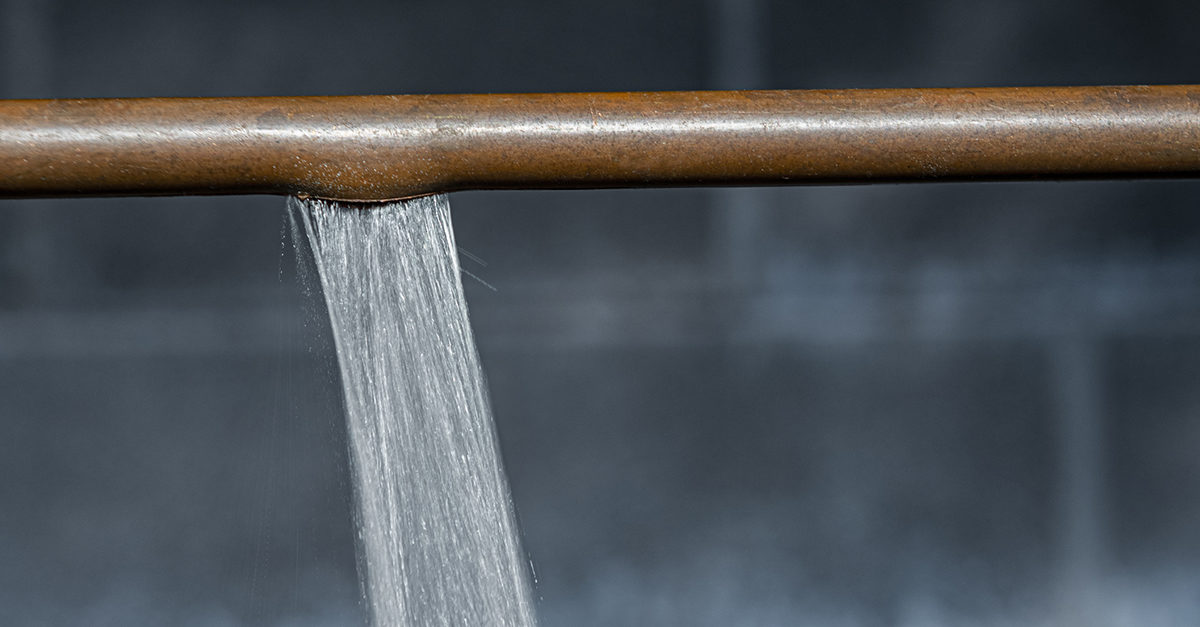It never fails: Winter arrives; pipes burst. On the surface, burst pipes appear to be a given for the season—but it’s not an inevitable event. Burst pipes are preventable.
Why pipes burst
When water freezes, it expands. So, when water freezes inside a pipe, that expansion can put pressure on the pipe, causing it to weaken and eventually burst.
Water pipes on exterior walls of buildings and in colder areas within a building, such as a basement, an attic, or underneath cabinets, are the most susceptible to becoming frozen and subsequently bursting.
When a pipe bursts, you have double trouble on your hands: the damage to the pipe itself and the damage caused by the water flowing from the broken pipe, which can be quite extensive, especially if the burst occurs when no one is present to be aware of the event.
Furthermore, if enough pipes within a municipality burst, the result can be the threat of a water shortage. Such an event happened over the 2022 December winter holidays in Selma, Alabama. According to Alabama News, so many Selma businesses had burst pipes that the town’s mayor, James Perkins Jr., felt the need to issue a state of emergency because, as he stated, “there is a real possibility that we will run out of water.”
It’s not unusual to hear of areas in warmer states with numerous burst pipes when freezing temperatures arrive, mainly because the residents aren’t accustomed to cold weather and tend to be unprepared when such weather hits. But whether a building is in the cooler north or the warmer south, it’s always a good idea to be ready for such an event, because even if it doesn’t happen often, history proves that it still can—and will—happen (see Facilities Nationwide Deal With Burst Pipes From Extreme Cold).
Steps to prevent burst pipes
In knowing why pipes burst in the first place, it’s easy to see that the key in preventing burst pipes is to make sure the water inside the pipes never freezes. This might appear to be easier said than done, but it’s truly doable. According to the Public Works page of the Lake County, Illinois, website, the following are simple, affordable steps that can help keep water from freezing and pipes from bursting in your facility:
Open faucets. Water that is flowing is less apt to freeze than water that is stagnant in pipes. So, as soon as temperatures near freezing (32 degrees Fahrenheit) open as many faucets as possible, just enough to produce a small drip. While this preventative trickle might result in a higher water bill, that price won’t compare to the cost of broken pipes and physical materials damaged due to flooding.
Warm up pipes. If pipes appear to be freezing, you can warm the pipes using a space heater, heating pad, electric hair dryer, or hot water on a cloth. Never use an open flame, however, to heat up pipes.
Don’t lower the heat. It’s a common, money-saving practice to lower a facility’s heat at night, over weekends, or during holiday closures when no one is present. However, in cold winter months, that’s an opportunity for 1) pipes to freeze and 2) no one to notice, causing even more damage due to uncontrolled flooding. Keep your facility warm enough to prevent water in pipes from freezing as the temperatures dip (usually no lower than 55 degrees Fahrenheit).
Open cabinet doors. In areas such as kitchens and bathrooms, opening cabinet doors when the temperature drops outside can help warmer air reach the pipes.
Disconnect hoses. Unhook any hoses that are connected to outdoor faucets. A connected hose with water in it will freeze. As the ice forms, it will expand back into the building and can potentially break the pipe.
Tightly seal potential airways. Make sure cold outside air is not leaking into the building, especially in areas such as basements and crawl spaces, where pipes are exposed.
Insulate pipes. Check your building for pipes that would be more susceptible to freezing and consider insulating those pipes as a preventative measure.




